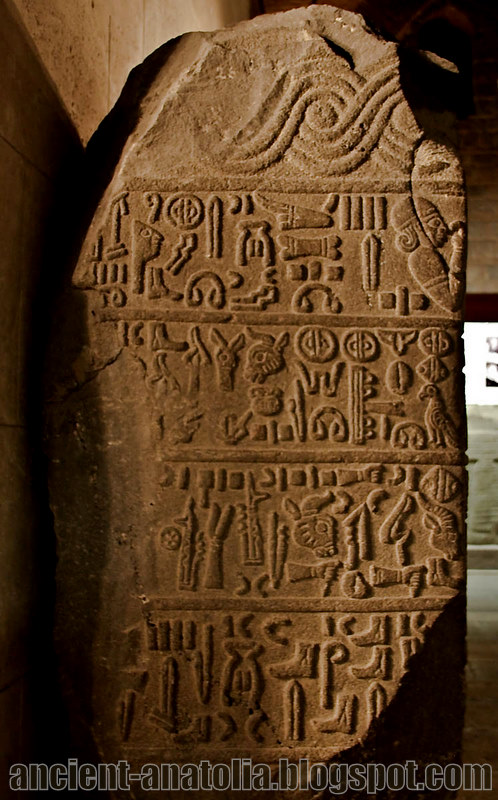
Anatolian hieroglyphs are an indigenous logographic script native to central Anatolia, consisting of some 500 signs. They were commonly known as Hittite hieroglyphs, however the language they encode proved to be Luwian. They are typologically similar to Egyptian hieroglyphs, but do not derive graphically from Egyptian script. There is no demonstrable connection to Hittite cuneiform.
Individual Anatolian hieroglyphs are attested from the third and early second millennia BC across Anatolia and into modern Syria. The earliest examples occur on personal seals, but these consist only of names, titles, and auspicious signs, and it is not certain that they represent language. Most actual texts are found as monumental inscriptions in stone, though a few documents have survived on lead strips.
The first inscriptions confirmed as Luwian date to the Late Bronze Age, ca. 14th to 13th centuries BC. And after some two centuries of sparse material the hieroglyphs resume in the Early Iron Age, ca. 10th to 8th centuries. In the early 7th century, the Luwian hieroglyphic script, by then aged some 700 years, is marginalized by competing alphabetic scripts and falls into oblivion.
While all the preserved texts employing Anatolian hieroglyphs are written in the Luwian language, some features of the script suggest its earliest development within a bilingual Hittite-Luwian environment...
More about Luwians...
More about Hittite cuneiform...
PHOTO: Anatolian Hieroglyphs by ancient-anatolia.blogspot.com